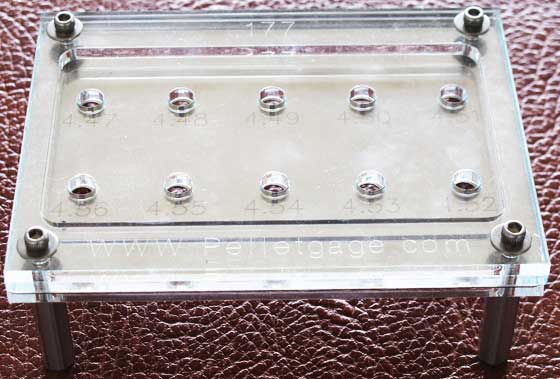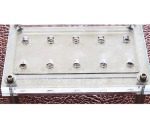If you’ve ever shot competitively or know someone that’s shot competitively, then you know that ammo selection is extremely important. Ask any .22LR benchrest shooter, and they’ll be able to tell you the exact ammo batch that performs best in their competition rifle. Do airgunners need this kind of attention to detail? You better believe it.
Where Does Airgun Accuracy Come From?
This is just a guess, but it’s going to be a pretty educated guess based on many years of testing and reviewing airguns. While valving and barrels certainly play a major role in the overall accuracy of an airgun, if the ammo isn’t consistent, you will always be shooting at a moving target.
Let’s go back some seventeen or so years. The standards for acceptable accuracy were much lower. Spring guns shooting 1” at 15 yards were considered “good shooters.” PCP airguns shooting 1” or 1.5” at 50 yards were considered “excellent shooters.”
Over the years, and more so over the last 4 or 5 years, airgun manufacturing has progressed by leaps and bounds. The lines between affordable and expensive airguns have become nearly wiped out, specifically regarding accuracy. There are $300 airguns that are shooting right alongside $1500 airguns without giving up a single inch in energy or accuracy. That’s really incredible and why it’s a great time to be an airgunner.
Where 1” at 50 yards used to be “great,” it’s now seen as the baseline for performance on any PCP. Expensive PCPs are expected to shoot MOA or SUBMOA even to begin to get taken seriously. This has put pressure on the ammo industry to rise to the occasion and make better, more consistent ammo.
Not All Ammo is Created Equal
Premium brands like JSB and H&N (and others) pay great attention to how each pellet comes off the assembly line, especially with their match ammo. On the other hand, more budget-friendly brands allow for a bit more slop in their ammo. This is why, and this happens quite a bit with big-box ammo, you can have one tin that shoots pretty decently and then the next shoot terribly. Or, have wide variances within the same tin.
Let’s take a look at the H&N Field Target Trophy line of pellets. .22 caliber Field Target Trophy pellets come in 3 different head sizes: 5.53, 5.54, and 5.55. They are broken out into 1/100ths of a MM based on the very specific need of the rifle barrel. You will still find variances within each tin as hard as they try. If you are a competitive shooter, and your airgun prefers 5.54mm pellets, how do you make sure that you are getting just that?
Time to Size & Weigh Those Pellets

The most popular pellet gauge tool is probably found at www.pelletgage.com and they are still making gauges that can identify pellet head size in a lot of different calibers. Once you’ve identified the exact size, you can then start to look at variances in weight. Let’s talk about that next.
While head size is very important, pellet weight is equally, possibly more important. Pellets are measured in grains and identified in values as small as tenths or hundredths of grains. So if we take our field target trophy pellets, they are marketed as 14.66 grain pellets. But what are the variances, if any, from pellet to pellet? There’s only one way to really find out, and that’s to get a precision jeweler’s scale and weigh your sorted pellets.
Let’s Bring it Home
If all this seems a bit much to have a good time shooting in the backyard, then you’re probably like most of us and just love to shoot. But if reading this article and thought about placing an order for a pellet gauge; then you’re one of the elite few that values extreme, consistent accuracy above all else.
Regardless of which side of the coin you fall on, maybe somewhere in the middle, the reality is that today’s airguns aren’t the same as yesterday’s. The inconsistencies that were once tolerated have become unacceptable. Airgun manufacturing has reached a level where the ammo we shoot has become the biggest limiting factor. Fortunately, there are tools available to overcome even this.
